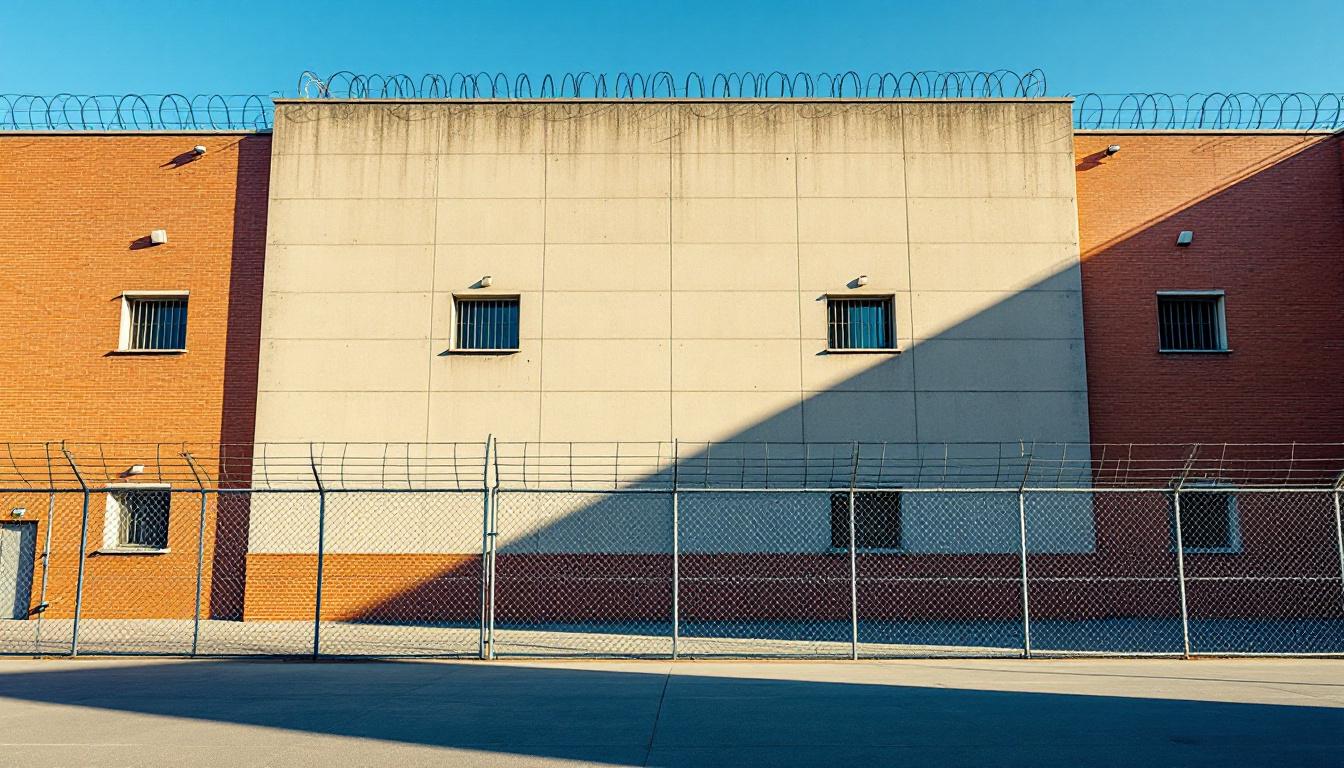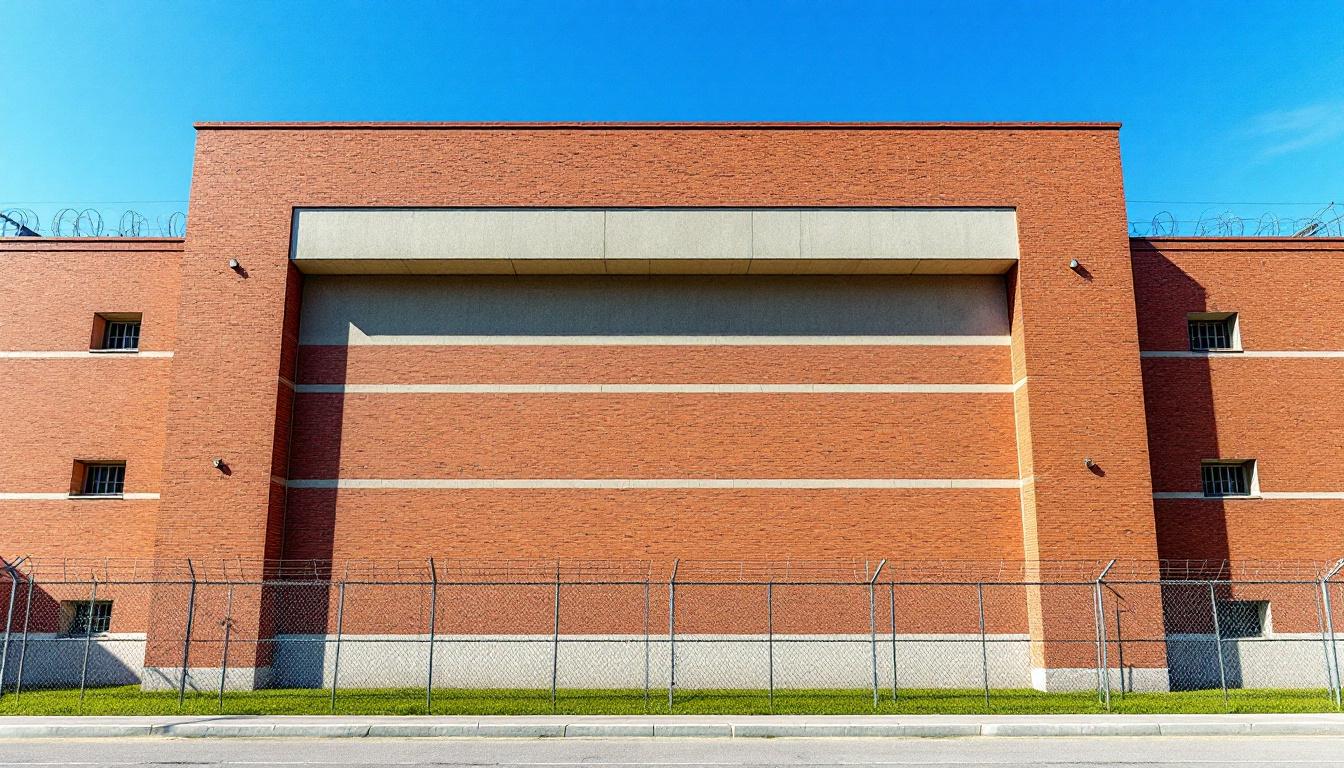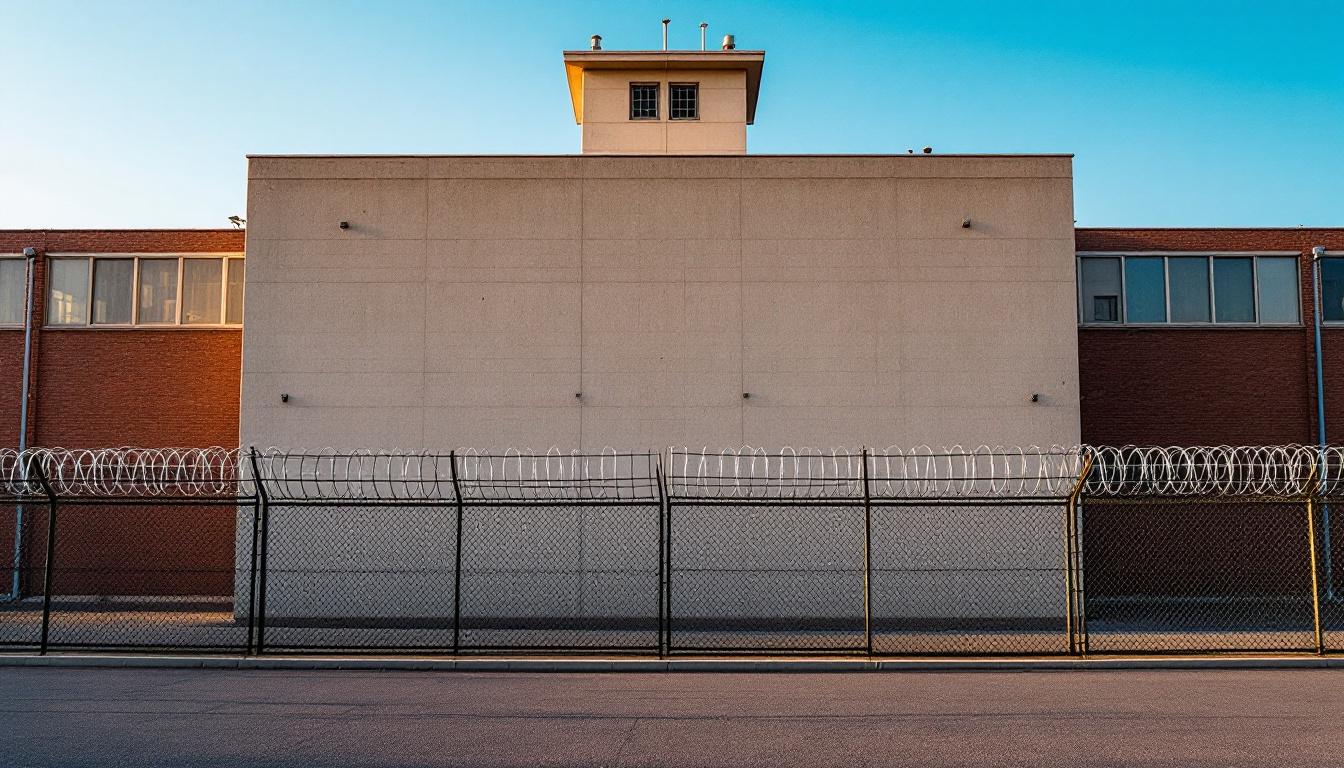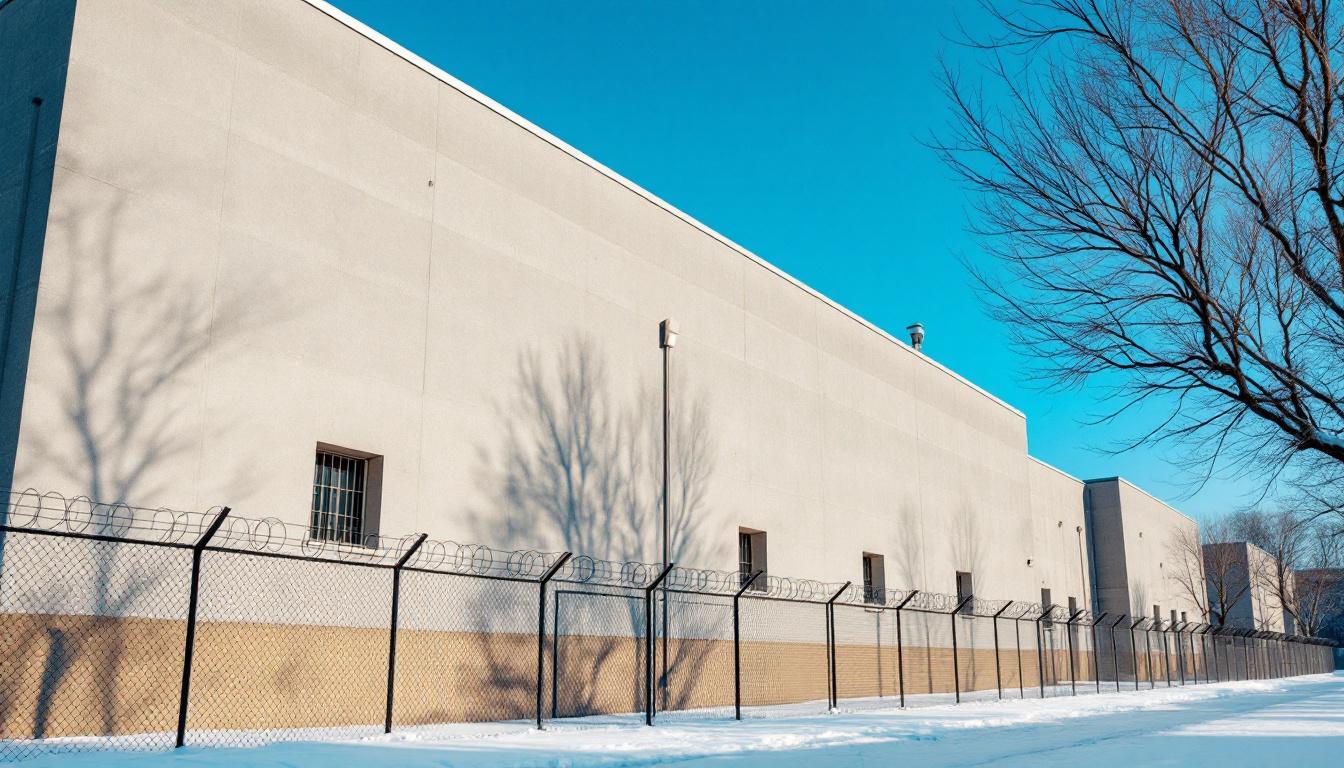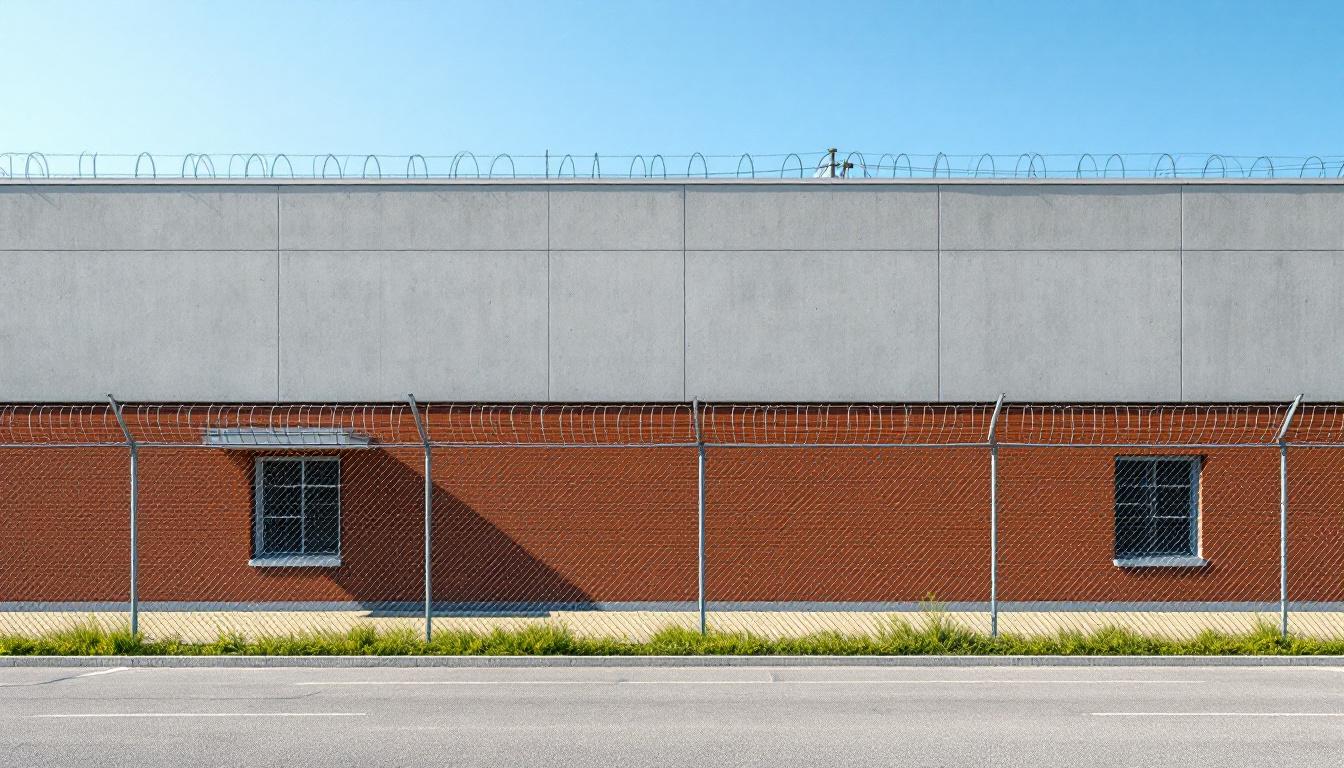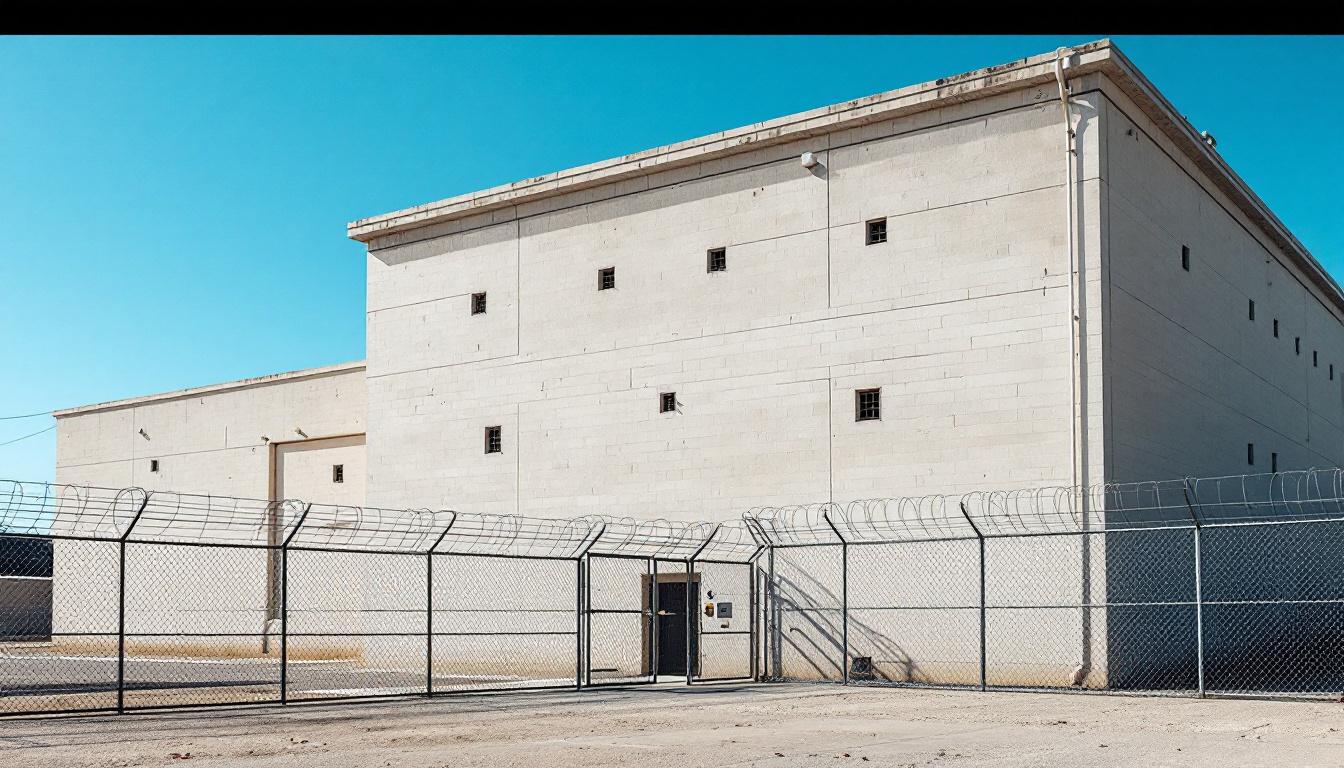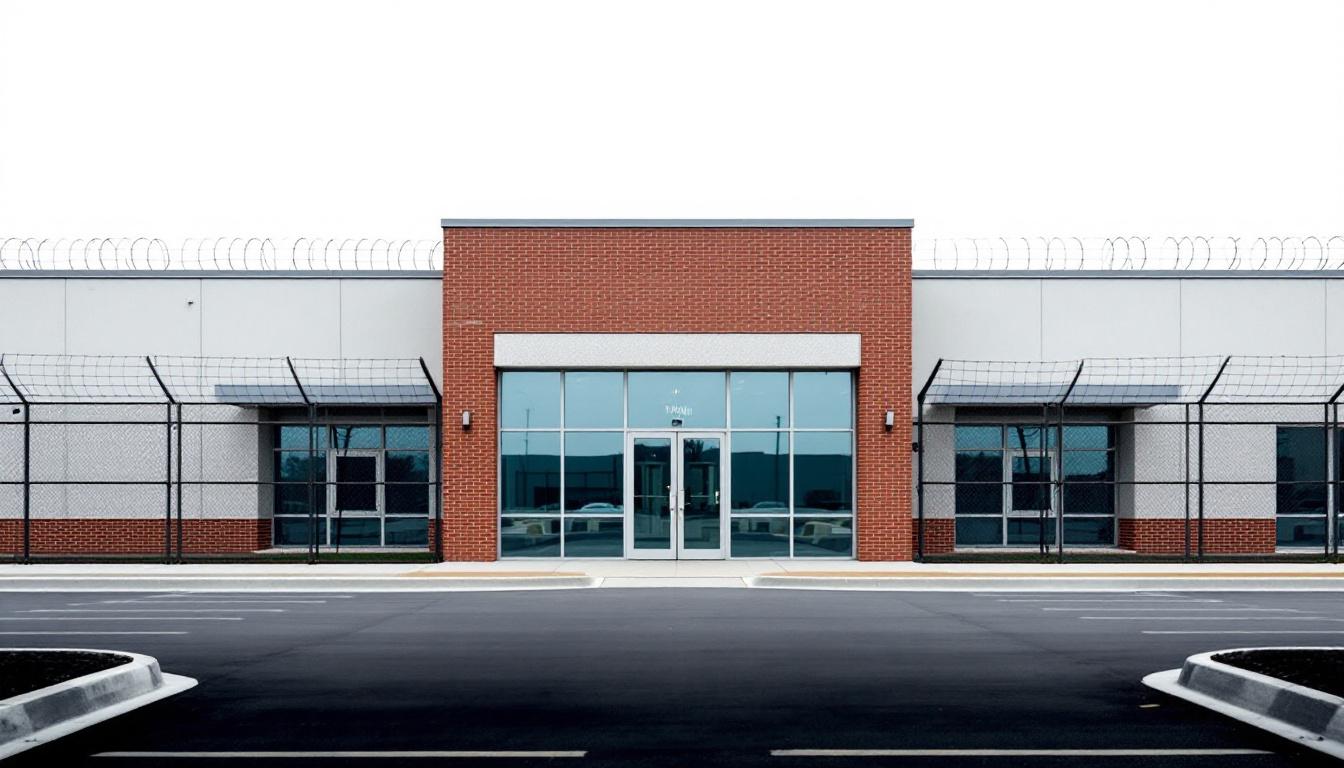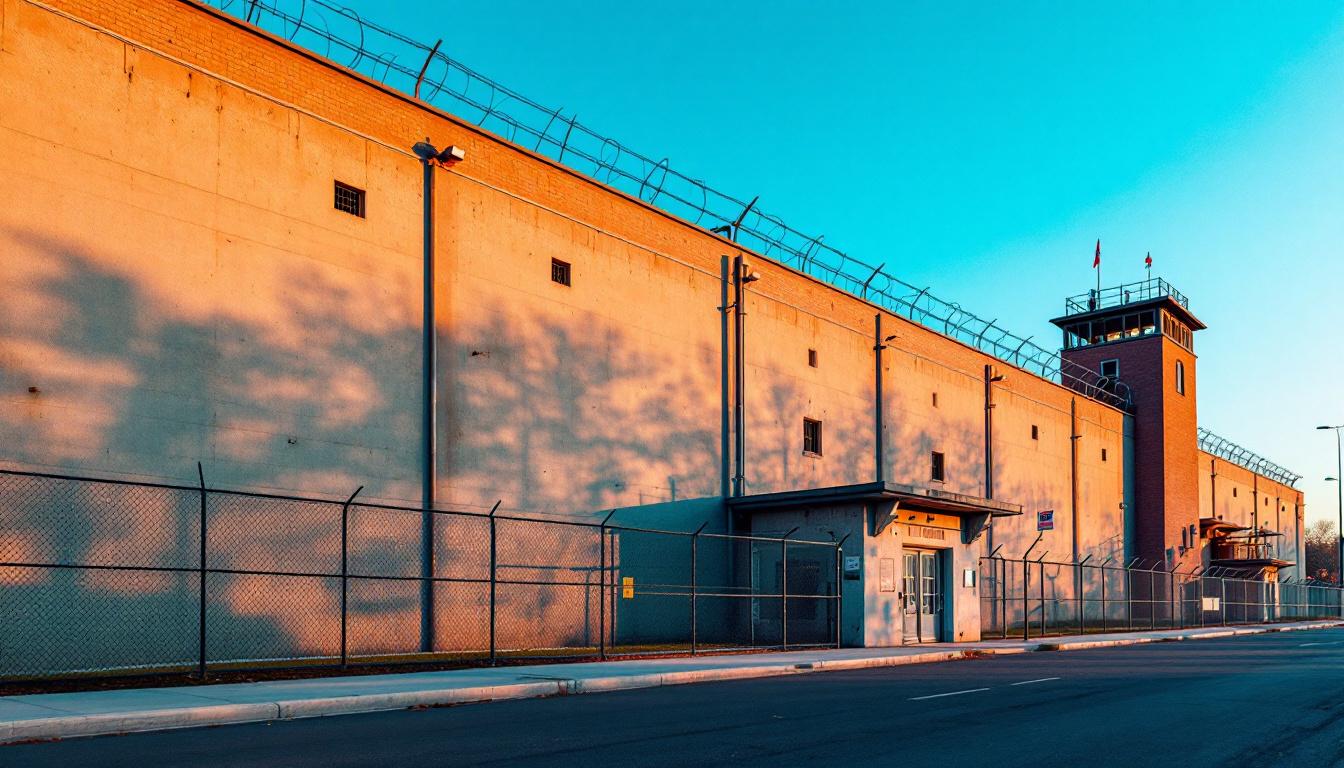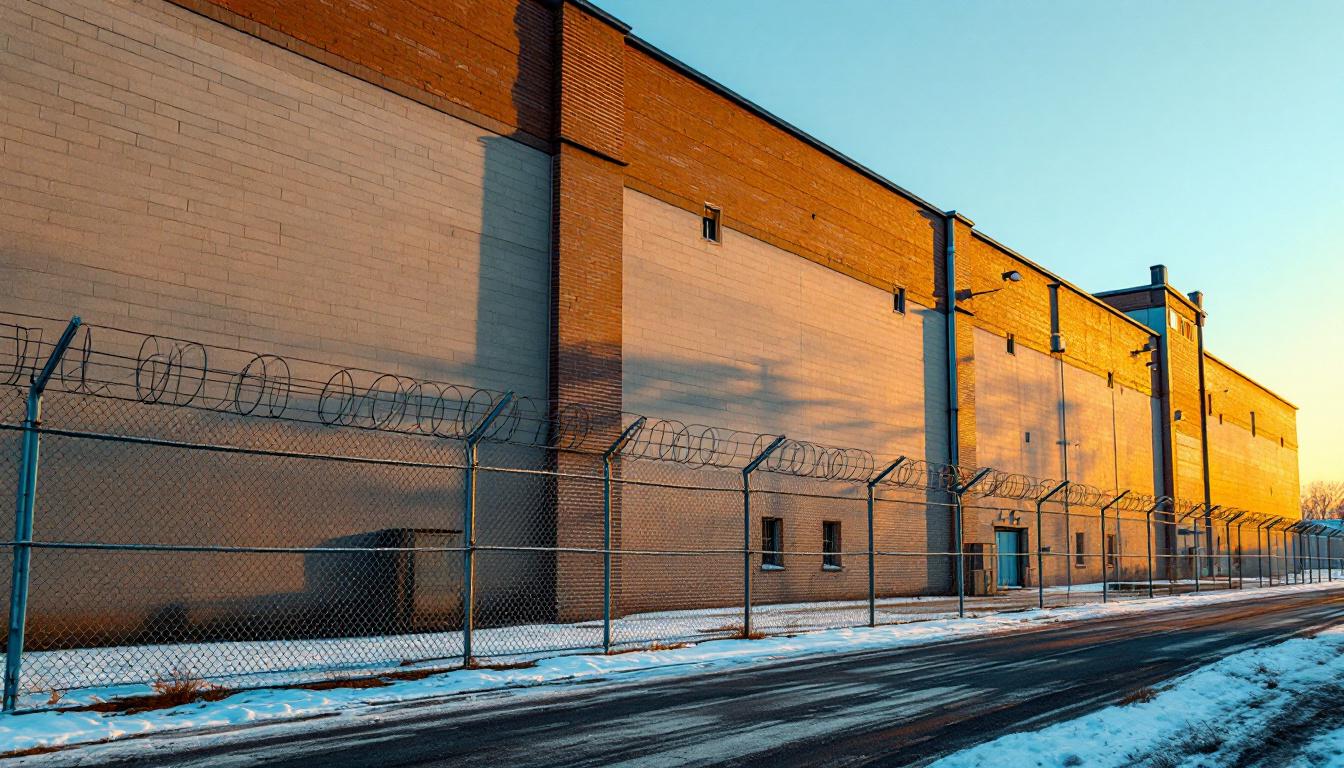
Quick Navigation
How to contact an inmate at Lafayette Parish Correctional Center
This comprehensive guide will walk you through how to connect with an inmate at Lafayette Parish Correctional Center. Follow the steps below to find an inmate and send letters and photos:
- Search for the inmate using our search tool below
- Create your account or log in to Penmate
- Write your message (up to 6,000 characters)
- Send instantly - inmates receive printed copies daily
Find an Inmate
Search for an inmate to start communicating today
Tip: You can search by first name, last name, or inmate ID number
To contact a person at Lafayette Parish Correctional Center start by searching for the person on the official facility website. Perform a search by following these steps:
- Step 1: Enter their first name and last name into the search form and click "Search"
- Step 2: Locate their inmate record
- Step 3: Write down their Inmate ID and any housing information provided
Important! Be sure to enter the person's full name. Nicknames should not be used.
How to Send Messages to Inmates

You can use your phone or computer to send emails, letters, and photos to an inmate. Messages are sent electronically to inmate tablets or kiosks at the facility. If you would like to send a message, start by searching for an inmate at Lafayette Parish Correctional Center.
Sending Photos and Postcards

A great way to send love and support to a loved one at Lafayette Parish Correctional Center is to send photos and postcards. It only takes a few minutes to send photos from your phone and it makes a huge difference. You can also mail postcards with words of support and inspiration, or design your own postcard for special moments like birthdays and holidays.
Important! Be sure not to send any explicit photos or they may not be approved by the facility. You can also use a photo printing app like Penmate to make sure your photos are printed at the correct size (4x6 or 3x5) and are mailed according to the rules and regulations of Lafayette Parish Correctional Center.
Frequently asked questions about Lafayette Parish Correctional Center
-
How long does it take to deliver a message?
If you're sending an email message your letter is usually delivered within 24-48 hours. For messages sent via mail you should expect delivery within 3-7 days. All messages will need be approved by Lafayette Parish Correctional Center.
-
How much does it cost to send a message to Lafayette Parish Correctional Center?
You can send a message free using your phone or mail a message via USPS for the price of a $0.60 stamp and envelope. You can also purchase credits or e-stamps from services starting at $1.99.
-
What services can I use to contact an inmate at Lafayette Parish Correctional Center?
Penmate
You can use Penmate to send letters and photos to an inmate from your phone. It's an easy way to stay in touch during your loved one's incarceration. Use the inmate locator to find an inmate's location and contact information, then you can send messages within a few minutes.
Securus messaging
Securus may be another option for communicating with an inmate at Lafayette Parish Correctional Center. You can create a friends and family account and purchase credits to send messages. All messages will be reviewed and must be approved by the facility.
JPay
Some county jails and state prisons may support sending messages with JPay. You must register an account with the system, find your loved one, and purchase stamps to send messages. For some locations you can also attach photos.
Smart Jail Mail
You may also check if Smart Jail Mail is available at Lafayette Parish Correctional Center. Smart Jail Mail is operated by Smart Communications and has contracted with some state and county jails. After purchasing credits, your messages and photos are sent to the facility, printed out, and then handed out to your loved one.
-
What is the mailing address of Lafayette Parish Correctional Center?
Mailing address:
Lafayette Parish Correctional Center
916 Lafayette St
Lafayette, LA 70501
Phone: (337) 236-5400Business hours:
- Monday: Open 24 hours
- Tuesday: Open 24 hours
- Wednesday: Open 24 hours
- Thursday: Open 24 hours
- Friday: Open 24 hours
- Saturday: Open 24 hours
- Sunday: Open 24 hours
-
What are the visiting hours at Lafayette Parish Correctional Center?
Visiting hours at Lafayette Parish Correctional Center vary by housing unit and security level. Generally, visits are scheduled on weekends and holidays, with some facilities offering weekday visits. Contact the facility directly at (337) 236-5400 or check their website for the current visiting schedule. Visits typically last 30-60 minutes and must be scheduled in advance.
-
What items are prohibited when sending mail to Lafayette Parish Correctional Center?
Prohibited items typically include: cash, personal checks, stamps, stickers, glitter, glue, tape, staples, paperclips, polaroid photos, musical or blank greeting cards, hardcover books, magazines with staples, and any items containing metal or electronics. Only send letters on plain white paper with blue or black ink. Photos must be printed on regular photo paper (no Polaroids). Always check with Lafayette Parish Correctional Center for their specific mail policies.
-
How do I send money to an inmate at Lafayette Parish Correctional Center?
You can send money to an inmate at Lafayette Parish Correctional Center through several methods: 1) Online using JPay, Access Corrections, or the facility's approved vendor, 2) Money orders mailed directly to the facility with the inmate's name and ID number, 3) Kiosks located in the facility lobby, or 4) Over the phone using a credit or debit card. Fees vary by method, typically ranging from $2.95 to $11.95 per transaction.
-
Can I schedule a video visit with an inmate at Lafayette Parish Correctional Center?
Many facilities now offer video visitation as an alternative to in-person visits. At Lafayette Parish Correctional Center, video visits may be available through services like Penmate, Securus Video Connect, GTL, or ICSolutions. Video visits typically cost $10-20 for 20-30 minutes and must be scheduled in advance. You'll need a computer or smartphone with a camera and reliable internet connection. Contact the facility for their specific video visitation policies and approved vendors.
-
What identification do I need to visit an inmate at Lafayette Parish Correctional Center?
All visitors must present valid government-issued photo identification such as a driver's license, state ID, passport, or military ID. Minors must be accompanied by a parent or legal guardian who can provide the minor's birth certificate. Some facilities require visitors to be on the inmate's approved visitation list, which may require a background check. Contact Lafayette Parish Correctional Center for specific ID requirements and visitor approval procedures.
-
How can I find out an inmate's release date?
To find an inmate's release date at Lafayette Parish Correctional Center, you can: 1) Use the online inmate search tool if available, 2) Call the facility's records department, 3) Contact the inmate's case manager or counselor, or 4) Have the inmate provide this information during a call or visit. For privacy reasons, some facilities only release this information to immediate family members.
Facility Overview
Contact Information
Lafayette Parish Correctional Center916 Lafayette St
Lafayette, LA 70501
Phone: (337) 236-5400
Official Website

About Lafayette Parish Correctional Center
Found in Pine Prairie, Louisiana, within the rural landscape of Evangeline Parish, the Pine Prairie ICE Processing Center operates under the New Orleans Field Office jurisdiction. The facility maintains structured communication protocols, with information services available between 8 a.m. and 4 p.m. at (318) 335-7500, while urgent messaging services support family connections through a dedicated line at (337) 599-2198. This processing center typically accommodates individuals in immigration proceedings, with staff coordinating closely with immigration courts and the Board of Immigration Appeals for legal matters.
The facility supports legal representation through modern filing systems, including the ERO eFile platform for G-28 submissions, which streamlines attorney-client communications. While the website information focuses primarily on legal and administrative services, immigration processing centers often include educational programming and support services that may encompass basic literacy instruction, English as a Second Language classes, and life skills training. These programs typically aim to provide constructive activities during detention periods and may include vocational training opportunities, library services, and recreational activities that support detainee well-being.
Pine Prairie ICE Processing Center operates within federal guidelines for immigration detention facilities, maintaining visitor protocols and communication systems designed to preserve family connections while individuals navigate their legal proceedings. The facility's location in rural Louisiana provides a setting where staff can focus on case management and coordination with immigration courts, while potentially offering programs that prepare detainees for various outcomes in their immigration cases.
Programs & Services
Educational and vocational initiatives form the foundation of resident development at Pine Prairie Detention. The facility typically operates under the philosophy that meaningful skill-building creates pathways to successful reintegration. Residents may participate in structured learning environments that address both immediate educational needs and long-term career preparation. This comprehensive approach often includes multiple program categories designed to build practical competencies while supporting personal growth.
Education programs may deliver basic literacy instruction alongside computer literacy training for residents seeking to improve foundational skills. These initiatives often include GED preparation courses and adult basic education classes that help participants complete their educational goals. Vocational training components typically focus on trade skills and job readiness preparation. Residents may access instruction in various technical fields, learning marketable skills that support employment opportunities upon release. Also, these programs often emphasize hands-on learning experiences that build both confidence and practical expertise.
Mental health counseling services typically provide therapeutic support for residents addressing personal challenges and behavioral concerns. These initiatives may deliver individual and group counseling sessions that focus on coping strategies and emotional wellness. Faith-based services often complement therapeutic programming by offering spiritual guidance and community support opportunities. Residents may participate in religious services, study groups, and mentorship programs that provide additional sources of encouragement and personal reflection. Also, these support initiatives typically work together to address the diverse needs of the resident population.
Daily Life & Visitation
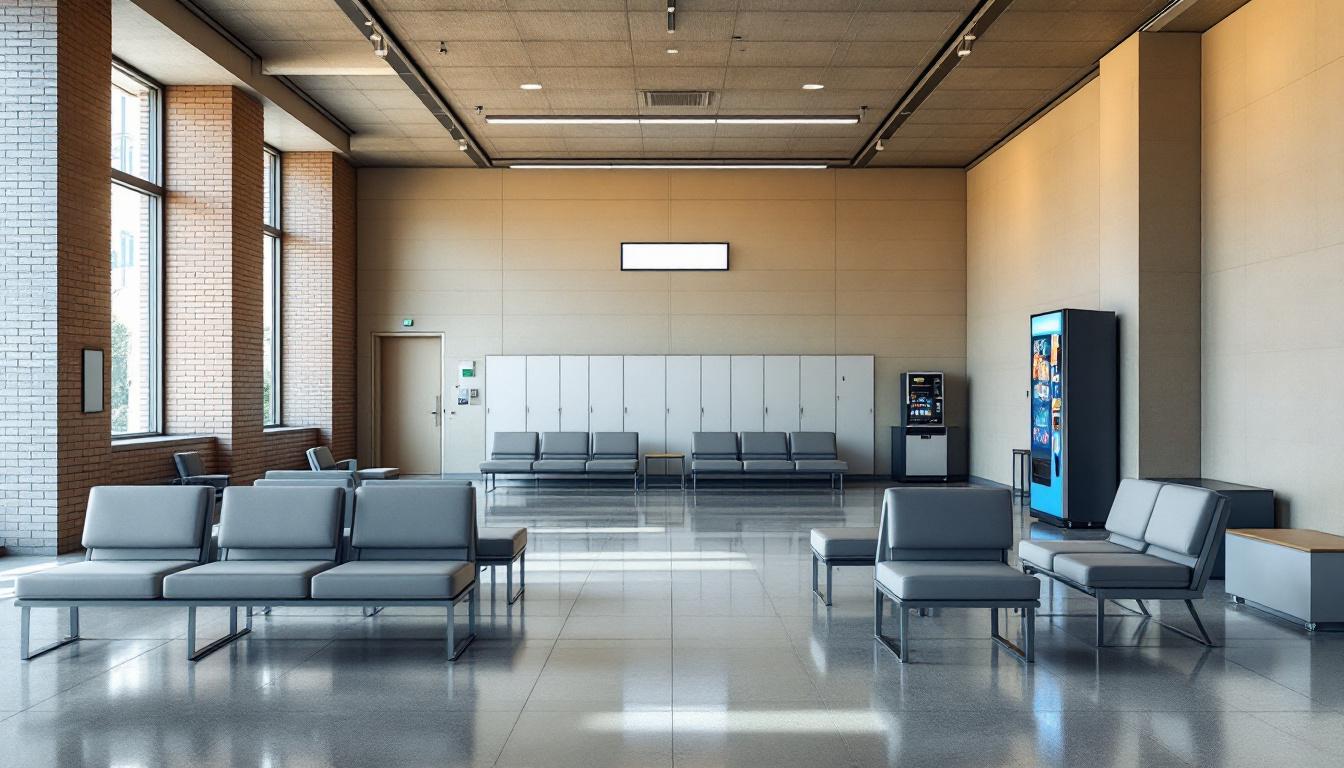
Structure and consistency form the backbone of residential life, with predetermined schedules that residents actively follow throughout each day. At present, the facility operates on a systematic routine that typically begins with early morning counts and meal service, followed by work assignments, programming activities, and designated recreation periods. This framework actively helps residents establish predictable patterns while maintaining facility security and order.
Housing arrangements generally place residents in dormitory-style units or individual cells, depending on classification levels and available space. Living areas typically include basic furnishings such as beds, storage areas, and shared bathroom facilities. Also, residents may access commissary services to purchase approved personal items and food products, while personal property allowances usually cover essential clothing and hygiene items within established guidelines.
Programming schedules deliver various educational and vocational opportunities that residents may participate in during designated hours. Recreation periods often include outdoor exercise time, indoor activities, and access to library services when available. However, visitation policies typically allow family members and approved visitors to maintain contact through scheduled visits, phone calls, and correspondence, helping residents preserve important relationships during their time at the facility. Work assignments generally involve facility maintenance, food service, or other operational duties that contribute to daily operations while providing structure and purpose.
Ready to Connect?
Start communicating with your loved one today
Search for an Inmate

